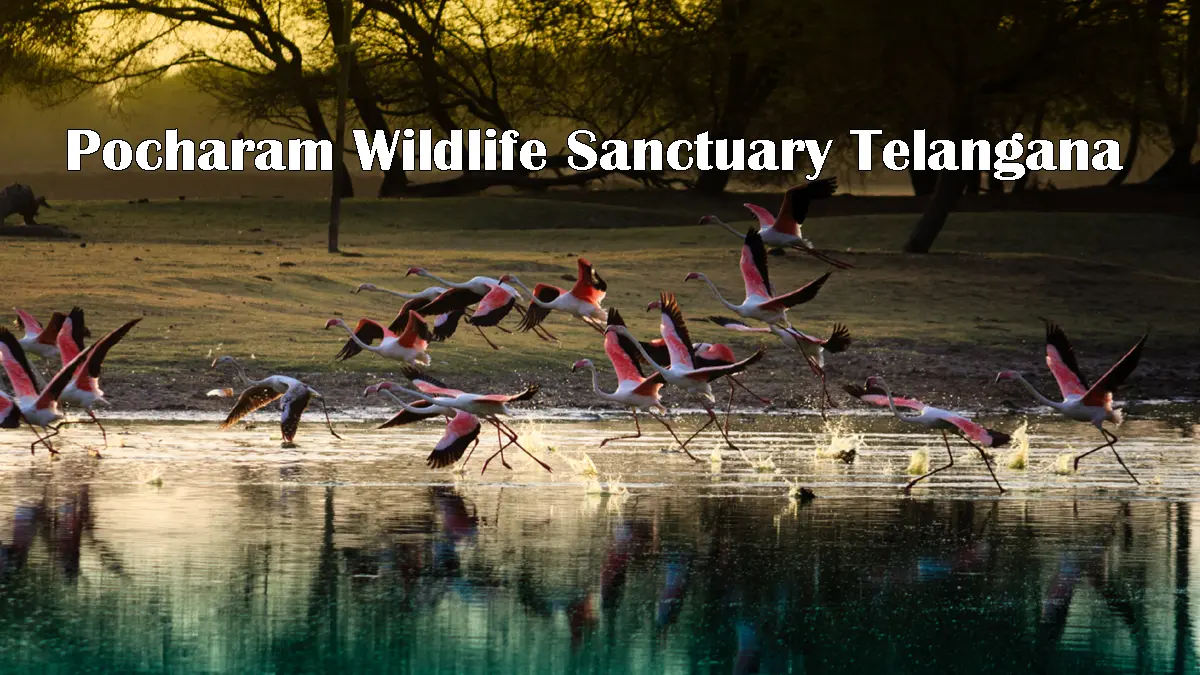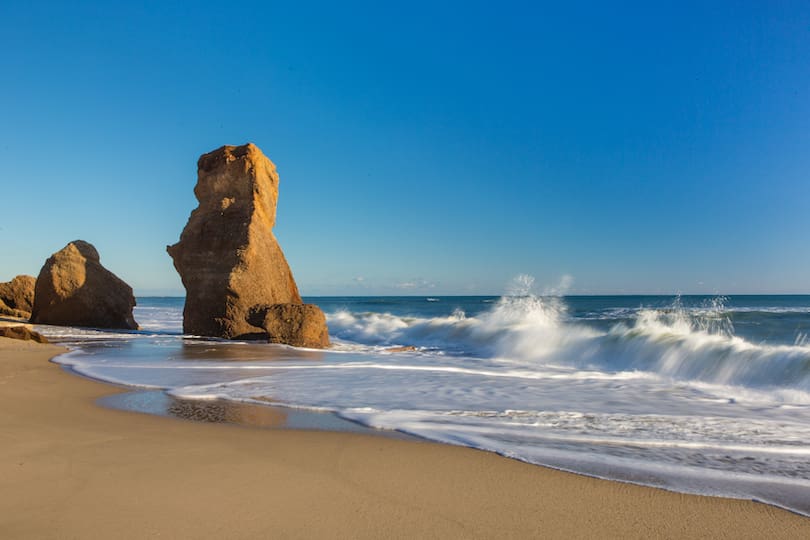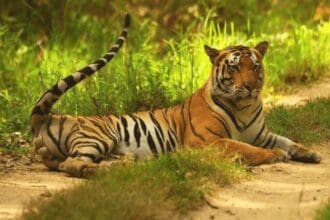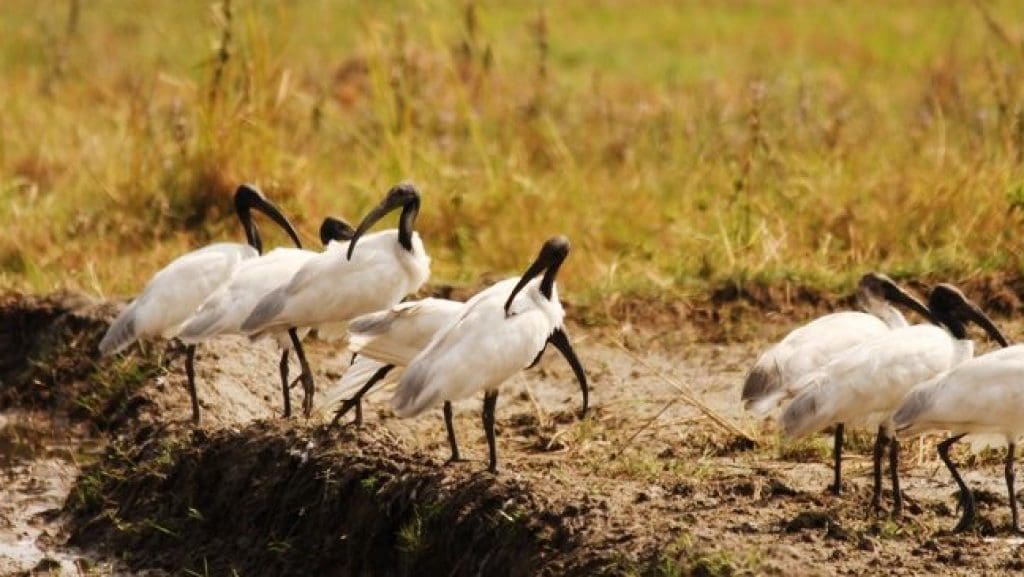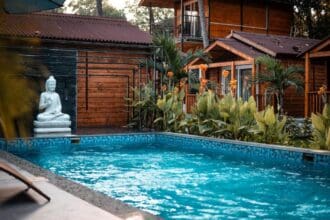Nestled in the lush green landscapes of Wayanad , a district in Kerala known for its misty hills, sprawling plantations, and rich cultural heritage, lies the Muthanga Wildlife Sanctuary —a pristine haven for nature lovers, wildlife enthusiasts, and adventure seekers. Officially part of the larger Wayanad Wildlife Sanctuary , Muthanga is one of its two primary divisions (the other being Tholpetty). Spanning over 344 square kilometers, this sanctuary is a vital component of the Nilgiri Biosphere Reserve , a UNESCO World Heritage Site that encompasses parts of Kerala, Tamil Nadu, and Karnataka.
In this comprehensive guide, we’ll delve deep into everything you need to know about visiting Muthanga Wildlife Sanctuary , from its unique biodiversity and thrilling activities to practical travel tips and hidden gems. Whether you’re planning a family vacation, a solo adventure, or a spiritual retreat, Muthanga offers something for everyone.
1. Overview of Muthanga Wildlife Sanctuary
A Brief History
Established in 1973, Muthanga Wildlife Sanctuary was created to protect the rich flora and fauna of Wayanad while promoting sustainable ecotourism. The sanctuary is named after the village of Muthanga, located near its entrance. It plays a critical role in conserving endangered species and maintaining the ecological balance of the Western Ghats, one of the world’s eight “hottest hotspots” of biological diversity.
The sanctuary is part of the Project Elephant initiative, aimed at protecting Asian elephants and their habitats. Its dense forests, grasslands, and water bodies provide an ideal environment for these majestic creatures, making it one of the best places in India to observe elephants in the wild.
Why Visit Muthanga?
- Biodiversity Hotspot : Home to over 30 species of mammals, 200 bird species, and countless reptiles, amphibians, and insects.
- Scenic Beauty : Rolling hills, serene lakes, and verdant forests create a picturesque backdrop for exploration.
- Adventure Opportunities : Jeep safaris, trekking trails, and birdwatching excursions cater to thrill-seekers and nature enthusiasts alike.
- Cultural Significance : The sanctuary is steeped in tribal history, with indigenous communities like the Kurichyas and Kattunayakas residing nearby.
Unique Features of Muthanga
What sets Muthanga apart from other wildlife sanctuaries in India is its seamless integration of conservation efforts with community involvement. The sanctuary actively collaborates with local tribes to preserve traditional knowledge about medicinal plants and sustainable living practices. Additionally, its proximity to popular tourist destinations like Sulthan Bathery and Kalpetta makes it easily accessible without compromising its untouched charm.
2. Exploring the Flora and Fauna of Muthanga
Diverse Vegetation
Muthanga’s landscape is dominated by tropical evergreen forests, moist deciduous woodlands, and expansive grasslands. These varied ecosystems support an incredible array of plant life, including towering teak trees, bamboo groves, and medicinal herbs used in Ayurvedic treatments.
Key Plant Species
- Teak Trees : Known for their durability, teak forms the backbone of Muthanga’s forest canopy. These trees are not only ecologically significant but also economically valuable due to their high-quality timber.
- Bamboo Groves : These fast-growing plants provide food and shelter for numerous animal species, including elephants and deer. Bamboo shoots are also consumed by local tribes as part of their diet.
- Medicinal Plants : Herbs like ashwagandha , brahmi , and tulsi are abundant, reflecting the region’s importance in traditional medicine. Many visitors come specifically to learn about Ayurveda and its connection to the sanctuary’s flora.
Wildlife Encounters
Muthanga is a paradise for wildlife enthusiasts, offering opportunities to spot some of India’s most iconic animals in their natural habitat. Among the highlights are:
Mammals to Look Out For
- Asian Elephants : Muthanga is renowned for its large elephant population, often seen roaming freely in herds. During the dry season, elephants congregate around waterholes, providing excellent photo opportunities.
- Tigers : Although elusive, Bengal tigers occasionally make appearances, particularly during early morning safaris. Their presence underscores the sanctuary’s role in tiger conservation under Project Tiger.
- Leopards : These stealthy predators are more commonly spotted than tigers but remain equally fascinating. Leopards are adept climbers and often rest on tree branches during the day.
- Gaur (Indian Bison) : The largest bovine species in the world, gaur are frequently observed grazing in open areas. Their imposing size and distinctive curved horns make them easy to identify.
- Sloth Bears : Known for their shaggy coats and distinctive snouts, sloth bears inhabit the sanctuary’s dense undergrowth. They primarily feed on termites and honeycombs.
Birdlife Highlights
- Malabar Grey Hornbill : A striking bird with a curved beak, endemic to the Western Ghats. These hornbills play a crucial role in seed dispersal.
- Peafowl : Vibrant peacocks add color to the landscape, especially during mating season when males display their elaborate plumage to attract females.
- Pariah Kite : Often seen soaring above the sanctuary, these birds of prey are skilled hunters, feeding on small mammals and reptiles.
Reptiles and Amphibians
- King Cobra : The world’s longest venomous snake, occasionally sighted in Muthanga’s forests. King cobras are revered in Indian culture and are protected under wildlife laws.
- Indian Rock Python : Non-venomous but impressive, these pythons can grow up to 5 meters in length. They are often found near water sources where they hunt for fish and small mammals.
- Frogs and Toads : Numerous amphibian species thrive in the sanctuary’s wetlands and streams, contributing to its rich biodiversity.
Tips for Wildlife Spotting
- Opt for early morning or late afternoon safaris when animals are most active. Temperatures are cooler during these times, encouraging wildlife to venture out in search of food and water.
- Stay quiet and avoid sudden movements to minimize disturbance. Loud noises can scare away animals, reducing your chances of sightings.
- Carry binoculars and a camera with a telephoto lens for capturing distant wildlife. Telephoto lenses allow you to zoom in without getting too close, ensuring both your safety and the animals’ comfort.
- Follow your guide’s instructions closely, as they possess invaluable knowledge about animal behavior and safe practices. Guides are trained to recognize signs of wildlife activity, such as tracks, droppings, and alarm calls.
3. Activities to Enjoy in Muthanga Wildlife Sanctuary
Jeep Safaris
One of the most popular ways to explore Muthanga is through guided jeep safaris. These tours take you deep into the heart of the sanctuary, where you’ll traverse rugged terrain, cross rivers, and navigate narrow forest paths. Along the way, keep your eyes peeled for elephants, deer, and even the occasional big cat.
Safari Timings
- Morning Safari: 6:00 AM to 9:00 AM
- Evening Safari: 3:00 PM to 6:00 PM
Booking Details
- Safaris must be booked in advance through authorized operators or the forest department office. Last-minute bookings may not always be available, especially during peak tourist seasons.
- Each jeep accommodates up to six passengers, ensuring an intimate experience. Private jeeps can also be arranged for families or groups seeking exclusivity.
What to Expect During a Safari
- Guided Tours : Experienced guides accompany each safari, sharing insights about the sanctuary’s ecosystem and pointing out wildlife.
- Photography Opportunities : Bring your camera to capture stunning images of animals, birds, and landscapes. Early morning light creates ideal conditions for photography.
- Safety Measures : Drivers adhere to strict speed limits and maintain a safe distance from wildlife to prevent disturbances.
Trekking Trails
For those who prefer a more immersive experience, Muthanga offers several trekking routes ranging from easy walks to challenging hikes. Popular trails include:
Pakshipathalam Trek
This moderate-to-difficult trail leads to a rocky cave nestled within the sanctuary. Legend has it that ancient sages once meditated here, adding a spiritual dimension to the hike. The trek requires a permit from the forest department and is best undertaken with a guide.
Edakkal Caves Trek
While technically outside Muthanga, Edakkal Caves are worth mentioning due to their proximity and historical significance. These prehistoric caves feature intricate carvings dating back thousands of years. The trek to the caves involves climbing steep steps, rewarding hikers with panoramic views of the surrounding valleys.
Tips for Trekking
- Wear sturdy shoes and carry sufficient water and snacks.
- Dress in layers to adapt to changing weather conditions.
- Stick to designated trails to avoid getting lost or disturbing fragile ecosystems.
Birdwatching
With over 200 avian species, Muthanga is a dream destination for birdwatchers. Early mornings and evenings are the best times to spot colorful residents like sunbirds, drongos, and flycatchers. Some rare species, such as the Malabar trogon and Nilgiri wood pigeon, are endemic to the Western Ghats and cannot be found elsewhere.
Best Spots for Birdwatching
- Waterholes : Birds often gather near water sources, especially during the dry season.
- Canopy Walks : Elevated walkways provide unobstructed views of birds perched on tree branches.
- Grasslands : Open areas attract ground-dwelling birds like quails and francolins.
Photography
The sanctuary’s diverse landscapes—from misty hills to shimmering lakes—provide endless inspiration for photographers. Macro lenses are perfect for capturing close-ups of insects and flowers, while wide-angle lenses excel at showcasing sweeping vistas.
Photography Tips
- Use polarizing filters to reduce glare and enhance colors, particularly when shooting reflective surfaces like water.
- Experiment with different angles and perspectives to create dynamic compositions.
- Be patient and observant; wildlife photography often requires waiting quietly for the perfect moment.
4. Cultural and Tribal Connections
Indigenous Communities
The area surrounding Muthanga is home to several indigenous tribes, each with its own unique traditions and customs. The Kurichyas , expert archers and farmers, have lived harmoniously with nature for centuries. Similarly, the Kattunayakas , known for their hunting skills, continue to practice age-old rituals tied to the forest.
Local Crafts
Visitors can purchase handmade crafts, such as bamboo baskets and pottery, directly from tribal artisans. These items not only serve as souvenirs but also support local livelihoods. Many homestays and eco-resorts collaborate with tribal communities to offer authentic cultural experiences, including cooking demonstrations and storytelling sessions.
Spiritual Sites
Several temples and shrines dot the outskirts of Muthanga, attracting pilgrims and tourists alike. Notable examples include:
- Soochipara Falls Temple : Located near the famous Soochipara Waterfalls, this temple hosts annual festivals attended by thousands. Devotees believe that bathing in the falls’ waters brings good fortune.
- Thirunelli Temple : Situated about 30 kilometers away, this ancient shrine dedicated to Lord Vishnu is surrounded by dense forests. Pilgrims perform ancestral rites at Papanasini River, believed to cleanse sins.
5. Best Time to Visit Muthanga Wildlife Sanctuary
Seasonal Highlights
- Winter (October to February) : Cool temperatures and clear skies make this the ideal time for safaris and treks. Visibility is excellent, increasing your chances of spotting wildlife.
- Summer (March to May) : While warmer, summer offers excellent chances to spot wildlife congregating around water sources. This is particularly true for elephants, which require large quantities of water daily.
- Monsoon (June to September) : Lush greenery and cascading waterfalls transform the landscape, though roads may become slippery. Monsoons also bring migratory birds, enhancing birdwatching opportunities.
Peak Tourist Season
December to February sees the highest footfall due to favorable weather conditions. If you prefer fewer crowds, consider visiting during the shoulder months of March or October. These periods still offer pleasant weather and decent wildlife sightings without the hustle and bustle of peak season.
6. How to Reach Muthanga Wildlife Sanctuary
By Air
The nearest airport is Calicut International Airport , approximately 97 kilometers away. From there, taxis and buses connect to Sulthan Bathery, the gateway town to Muthanga. Flight options are available from major Indian cities like Delhi, Mumbai, and Bangalore.
By Train
The closest railway station is Kozhikode Railway Station , located about 114 kilometers from the sanctuary. Regular bus services operate between Kozhikode and Sulthan Bathery, taking approximately three hours.
By Road
Muthanga is well-connected by road to major cities in Kerala and neighboring states. State-run buses and private taxis are readily available. The sanctuary is situated along the Sulthan Bathery-Mysore Highway , making it accessible for road trips.
Driving Tips
- Roads leading to Muthanga are winding and narrow, so drive cautiously, especially if you’re unfamiliar with mountain driving.
- Fuel stations are limited beyond Sulthan Bathery, so fill up beforehand to avoid running out of gas.
- Carry snacks and water, as eateries along the route are sparse. Pack essentials like first-aid kits and spare tires for emergencies.
7. Accommodation Options
Forest Rest Houses
Managed by the Kerala Forest Department, these budget-friendly accommodations offer basic amenities and stunning views. Advanced booking is essential, as availability is limited. Forest rest houses are ideal for travelers seeking an authentic jungle experience.
Eco-Friendly Resorts
Several eco-resorts near Muthanga emphasize sustainability without compromising comfort. Features like solar power, organic gardens, and waste recycling systems ensure minimal environmental impact. These resorts often organize guided nature walks, birdwatching tours, and cultural programs.
Top Eco-Resorts
- Wayanad Wild : Nestled amidst coffee plantations, this resort offers luxurious cottages and guided nature walks. Guests can participate in plantation tours and learn about sustainable farming practices.
- Vythiri Resort : Known for its treehouse accommodations, Vythiri provides a unique blend of luxury and wilderness. Activities include bamboo rafting, spice garden visits, and Ayurvedic massages.
Budget Stays
For budget-conscious travelers, homestays and guesthouses in nearby towns like Sulthan Bathery and Kalpetta offer affordable lodging options. These establishments provide warm hospitality and home-cooked meals, giving visitors a taste of local life.
Recommended Homestays
- Green Gates Homestay : Run by a local family, this homestay serves authentic Kerala cuisine and organizes cultural programs. Guests can interact with hosts to learn about Wayanad’s history and traditions.
- Hill View Guest House : A no-frills option located close to the sanctuary entrance. Clean rooms and friendly staff make it a convenient choice for short stays.
8. Travel Tips for Visiting Muthanga
- Pack Appropriately : Carry light cotton clothing for summers and warm layers for winters. Don’t forget rain gear during monsoons, as sudden showers are common.
- Stay Hydrated : Drink plenty of water, especially during safaris and treks, to combat dehydration. Carry reusable bottles to minimize plastic waste.
- Respect Wildlife : Maintain a safe distance from animals and avoid feeding them. Human interference can disrupt natural behaviors and endanger both humans and wildlife.
- Follow Rules : Adhere to all guidelines set by the forest department, including prohibitions on smoking and littering. Conservation efforts rely on responsible tourism practices.
- Book in Advance : Safaris and accommodations should be reserved ahead of time, particularly during peak seasons. Last-minute arrangements may result in disappointment or inflated prices.
- Carry Cash : ATMs are scarce in the vicinity, so carry sufficient cash for expenses. Small vendors and local markets may not accept credit cards.
- Acclimatize Gradually : If traveling from lower altitudes, spend a day adjusting to avoid altitude sickness. Symptoms include headaches, nausea, and fatigue.
Other Attractions Near Muthanga
While Muthanga itself is a treasure trove of experiences, the surrounding areas also boast several noteworthy attractions:
Chembra Peak
The tallest peak in Wayanad, Chembra offers breathtaking views and a heart-shaped lake nestled at its base. Trekking to the summit takes approximately four hours, rewarding hikers with panoramic vistas of the Western Ghats.
Banasura Sagar Dam
India’s largest earthen dam, Banasura Sagar is surrounded by scenic islands and lush greenery. Visitors can enjoy boating, trekking, and picnicking in the area. The dam’s reservoir reflects the surrounding hills, creating a mirror-like effect that is particularly striking at sunrise and sunset.
Soochipara Falls
Also known as Sentinel Rock Waterfalls, this three-tiered cascade is a popular picnic spot. Surrounded by dense forests, the falls plunge from a height of 200 feet, creating a thunderous roar that echoes through the valley. Swimming is permitted in certain areas, though caution is advised due to strong currents.
Kuruva Island
A protected river delta, Kuruva Island is home to rare flora and fauna and offers opportunities for bamboo rafting. The island spans over 950 acres and is accessible only by boat, ensuring minimal human interference. Walking trails crisscross the island, allowing visitors to explore its pristine beauty at their own pace.
Conclusion
Muthanga Wildlife Sanctuary is more than just a destination—it’s a celebration of nature’s wonders, a testament to conservation efforts, and a reminder of our responsibility to protect the planet’s precious ecosystems. Whether you’re marveling at a herd of elephants crossing your path, trekking through mist-laden forests, or simply soaking in the tranquility of the surroundings, every moment spent here leaves an indelible mark on your soul. So pack your bags, embrace the call of the wild, and let Muthanga enchant you with its timeless beauty.
FAQs About Muthanga Wildlife Sanctuary
- What is the entry fee for Muthanga Wildlife Sanctuary?
- Entry fees vary depending on nationality and age. Indians typically pay INR 50-100, while foreigners pay INR 300-500.
- Are permits required to enter the sanctuary?
- Yes, permits are mandatory and can be obtained at the entry gate or online.
- Is Muthanga suitable for families with children?
- Absolutely! The sanctuary offers easy treks and safe environments for kids.
- Can I spot tigers in Muthanga?
- While tigers are rarely sighted, leopards and other wildlife are more common.
- How long does it take to reach Muthanga from Sulthan Bathery?
- It takes about 30 minutes by road.
- Are pets allowed inside the sanctuary?
- No, pets are not permitted to protect the sanctuary’s ecosystem.
- What is the best way to explore Muthanga?
- Guided jeep safaris and trekking trails are highly recommended for a comprehensive experience.
- Is photography allowed inside the sanctuary?
- Yes, photography is permitted, but avoid using flash near animals.
- Are there medical facilities nearby?
- Basic medical facilities are available in Sulthan Bathery, but carry a first-aid kit for emergencies.
- Can I camp overnight in Muthanga?
- Camping is not allowed inside the sanctuary, but nearby resorts offer camping facilities.


